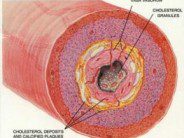Ovarian cancer is the leading cause of death from gynecological cancer in women. This deadly malignancy occurs in 1 of every 70 women. The initial symptoms are subtle and include bloating, frequent urination, pelvic pain, and abdominal fullness. As a result, the diagnosis is usually not made until the disease has progressed to a more advanced stage. The diagnostic workup includes confirmation by surgery to examine the abdomen and pelvis and to take biopsy samples. Patients with advanced disease at the time of diagnosis are treated with surgical reduction and debulking followed by a combination chemotherapy regimen. The theory is that the post-operative chemotherapy will destroy any remaining tumor burden that was not removed by surgery. In addition, chemotherapy is used to destroy any peritoneal metastatic lesions that the surgeon was not able to identify. Surgical researchers, lead by Dr. Vasilis Ntziachristos, have recently reported on a technique that used fluorescence to identify small metastatic lesions within the peritoneum intraoperatively to improve the surgical resection of tumor and lessen the overall cancer burden prior to chemotherapy. The results of their research were published online in the journal Nature Medicine. In an effort to improve the prognosis of advanced ovarian cancer, the researchers used tumor specific intraoperative fluorescence imaging to improve the efficacy of cytoreductive surgery. The use of tumor tagged fluorescence aides in the identification of small tumors within the peritoneum that are indistinguishable by the naked eye from normal tissue. The researchers utilized the fact that 90-95% of epithelial ovarian cancers overexpress the folate receptor alpha. Folate conjugated to fluorescein isothiocyanate was used to target the ovarian cancer cells that overexpress the folate receptor alpha. Patients were infused with the fluorescein conjugated folate prior to their debulking surgery in an effort to visualize all peritoneal tumors. The authors wrote, “The use of targeted fluorescent agents could provide a paradigm shift in surgical imaging as it allows an engineered approach to improving tumor staging and the technique of cytoreductive surgery and thereby improving the outcome in ovarian cancer… Besides improved staging, primarily expected for subjects initially classified in stages I and II, the second major advantage of intraoperative imaging as compared to current standard techniques is that it may guide the surgeon in debulking efforts, thus contributing to more efficient cytoreduction and ultimately improving the effect of adjuvant chemotherapy in patients with reduced tumor load”. Further studies are needed to confirm these results, and to determine if the use of this experimental technique will provide a survival advantage for patient with ovarian cancer.
See the YouTube video provided by the authors of the study demonstrating the use of intraoperative fluorescence imaging of ovarian cancer:
Reference:
Gooitzen M van Dam et al. “Intraoperative tumor-specific fluorescence imaging in ovarian cancer by folate receptor-alpha targeting: first in-human results” Nature Medicine published online September 18, 2011 doi:10.1038/nm.2472










 DrSamGirgis.com is a blog about medicine, nutrition, health, wellness, and breaking medical news. At DrSamGirgis.com, the goal is to provide a forum for discussion on health and wellness topics and to provide the latest medical research findings and breaking medical news commentary.
DrSamGirgis.com is a blog about medicine, nutrition, health, wellness, and breaking medical news. At DrSamGirgis.com, the goal is to provide a forum for discussion on health and wellness topics and to provide the latest medical research findings and breaking medical news commentary.
{ 0 comments… add one now }